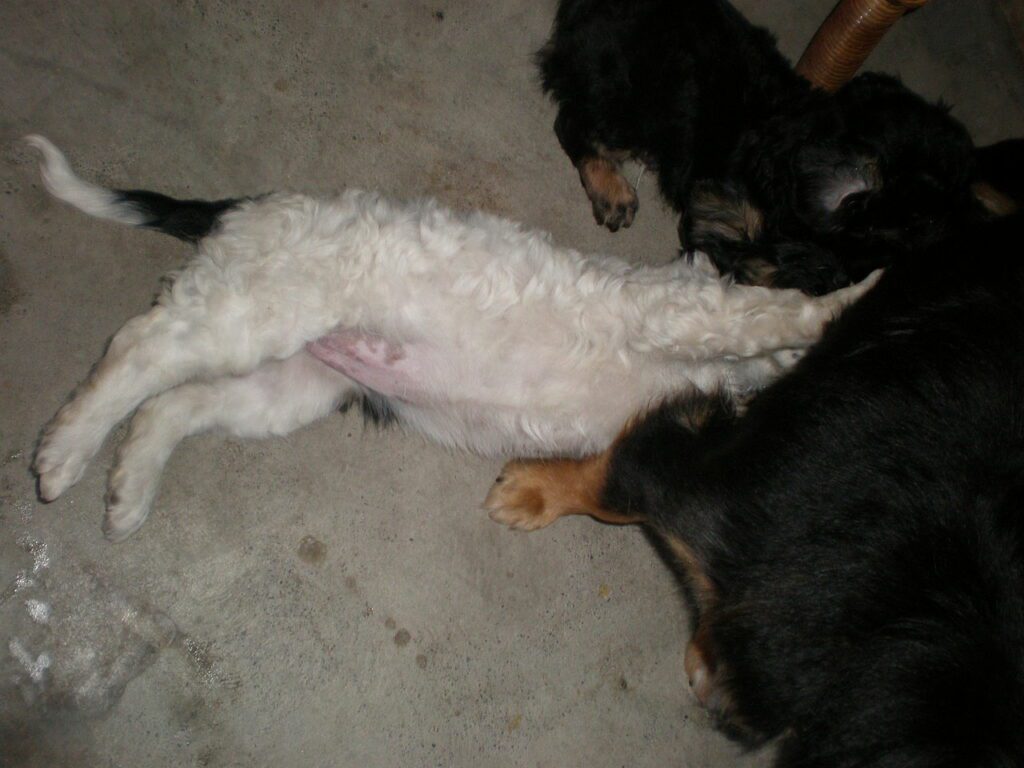Welcoming a new puppy into your home can be an exciting and overwhelming experience. Despite your best efforts to provide a comfortable environment for the little one, you may encounter some challenges along the way.
One such problem is when a puppy refuses to nurse, which can be a cause for concern since it needs proper nourishment to grow and develop.
In this article, we will outline step-by-step instructions on what to do when a puppy refuses to nurse, so you can feel confident in caring for your new pet and ensuring its good health.
1. Check the Puppy’s Health

When a puppy refuses to nurse, the first thing to do is to check for any signs of illness or injury. You need to examine the puppy’s body for any swelling, redness, or discharge around the mouth, nose, or eyes.
Make sure that the puppy’s body is not too hot or cold and take its temperature to ensure that it does not have a fever.
If you notice any concerns with the puppy’s health, such as lethargy, vomiting, or diarrhea, it’s important to contact a veterinarian right away. A vet can provide guidance on how to care for the puppy’s health and ensure that any illness or injury is promptly treated.
On the other hand, if you don’t notice any concerns with the puppy’s health, then you can proceed to the next step of warming up the milk or formula and attempting to feed the puppy.
Checking the puppy’s health is crucial because it helps you to identify any underlying health issues that might be causing the puppy to refuse to nurse.
Addressing the health problem can improve the puppy’s appetite and increase the chances of them feeding properly.
See also: How To Care For a Newborn Litter of Puppies [Complete Guide]
2. Warm Up the Milk

If you confirmed that the puppy is healthy, the next step is to gently warm up the milk or formula.
The appropriate temperature should be around 35-38 degrees Celsius, which is similar to the puppy’s body temperature, as this can help the puppy to digest the food better.
You can either use a bottle or syringe to administer the liquid to the puppy, depending on the pup’s age and size. Hold the puppy close to you and cradle it like you would a human baby.
You can either gently hold the bottle or carefully administer the liquid with the syringe into the corner of the puppy’s mouth.
It’s essential to ensure that the puppy is latched onto the nipple or syringe properly, and avoid overfeeding, as this can lead to digestion issues and bloating. Leave the nipples or syringe in the puppy’s mouth and allow them to suckle or swallow at their own pace.
If the puppy still refuses to nurse, it’s important not to force it as this may cause further stress and discomfort. Instead, you can try the next step to see if the puppy can be stimulated to start feeding.
See also: The Importance of Gentle Weaning for Puppies
3. Stimulate the Puppy
If the puppy is still refusing to nurse after warming up the milk or formula and attempting to feed it, the next step is to try to stimulate the puppy. You can do this by rubbing the puppy’s belly or gently squeezing its paw pads.
Stimulating the puppy prompts a natural feeding response as it triggers the instincts that a puppy would experience when their mother stimulates them to start feeding.
This step is especially useful when dealing with newborn or orphaned puppies who are not accustomed to being fed by bottle or syringe.
If the puppy begins to feed during the stimulation process, continue to offer them the liquid and make sure they are latched on properly.
However, if it does not respond, stop the stimulation and try again later. It’s important to be patient as it may take multiple attempts before the puppy starts feeding.
If the puppy continues to refuse to feed, do not force it as this may cause further stress and discomfort.
Instead, try the next steps which involve consulting a veterinarian, offering different nipples, burping the puppy, providing a warm and quiet environment, or considering supplemental feeding.
4. Consult a Veterinarian
A veterinarian will be able to offer additional guidance and advice on how to care for the puppy’s health and ensure that they receive the proper nourishment needed for healthy growth and development.
When contacting a veterinarian, be sure to provide them with as much information as possible, including the puppy’s age, breed, symptoms, and feeding history.
Depending on the situation, the veterinarian may recommend bringing the puppy in for an examination or providing advice over the phone.
It’s crucial to seek veterinary assistance as soon as possible because puppies are vulnerable. They can become dehydrated or malnourished quickly if they are not feeding properly.
Getting veterinary attention can not only help keep the puppy healthy but also help you feel more confident and informed when dealing with feeding or health issues in the future.
5. Offer Different Nipples
Sometimes a puppy may refuse to nurse because they are not comfortable or do not like the current nipple. In such cases, try using different styles of nipples to see if the puppy prefers one over the other.
There are different styles of nipples available in the market such as long or short, rubber or silicone, and different shapes. You can try different ones to see which the puppy responds to best.
It’s essential to ensure that the nipple fits the puppy’s mouth correctly and is not too large or small.
Using an inappropriate nipple size may cause the puppy to choke or not latch on properly. If you are unsure of the appropriate size, consult a veterinarian or a professional pet store for advice.
6. Burp the Puppy
After feeding, it’s important to gently burp the puppy to release any gas or air bubbles that may cause discomfort. Hold the puppy securely, supporting its head and neck, and gently pat its back in an upward motion.
Burping a puppy after feeding can help prevent digestive problems such as gas, bloating, or vomiting. It can also encourage the puppy to continue feeding. However, not all puppies will need to be burped, as some may not swallow a lot of air.
If the puppy seems uncomfortable or fussy after feeding, it’s a good idea to burp them. You can try burping the puppy every few minutes during feeding to prevent discomfort.
If excessive gas or bloating persists, consult a veterinarian for advice on how to alleviate it.
7. Provide a Warm and Quiet Environment
Puppies need a calm and comfortable environment to encourage nursing. Ensure that the puppy’s bedding is clean, fresh, and warm.
You can use a warm towel to wrap around the puppy or provide a heating pad set on low and covered with a thick towel for warmth.
It would be best to create a dimly lit and peaceful environment where there are no loud noises or disruptions. You can play soft music or provide white noise to help the puppy relax.
Avoid overcrowding the puppy’s space, as this can make them feel anxious and stressed.
Additionally, make sure that you are relaxed too! Puppies can sense human energy and may become anxious if you are stressed or anxious.
Approach the feeding process calmly and with a positive mindset to encourage the puppy to relax and feed as well.
8. Consider Supplemental Feeding
If the puppy continues to refuse to nurse, you may need to consider supplemental feeding to ensure its proper nutrition. A veterinarian can recommend specific formulas or products to supplement the puppy’s feeding.
Supplemental feeding can include lactose-free formulas, goat’s milk, or wet puppy food mixed with warm water. Avoid feeding cow’s milk to puppies as it can cause digestive problems.
It’s important to follow the veterinarian’s instructions regarding supplemental feeding. Do not exceed recommended quantities, as overfeeding may cause digestive problems.
You can gradually introduce supplemental feeding while continuing to offer the puppy the opportunity to nurse, as this can encourage its appetite.
Supplemental feeding should not be relied upon as a long-term solution and must be used as directed by a veterinarian while work is done to identify and address the issue of why the puppy is not nursing.
In Conclusion
Caring for a puppy can be a rewarding experience but can also pose unique challenges such as having a puppy that refuses to nurse.
However, by following the above step-by-step instructions including checking the puppy’s health, warming the milk or formula, stimulating the pup, consulting a vet or changing nipples, burping the puppy, providing a peaceful environment, and considering supplemental feeding, you can help your puppy overcome feeding challenges and ensure its good health.
Remember, being patient, calm, and positive throughout the process can help foster a nurturing environment for your new furry friend.
Always rely on veterinary professionals when in doubt or if a problem persists. By providing your puppy with proper care and attention, you can help ensure a happy and healthy life for years to come.





Leave a Reply